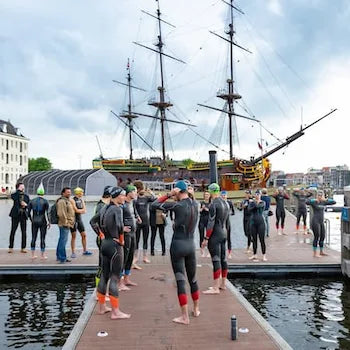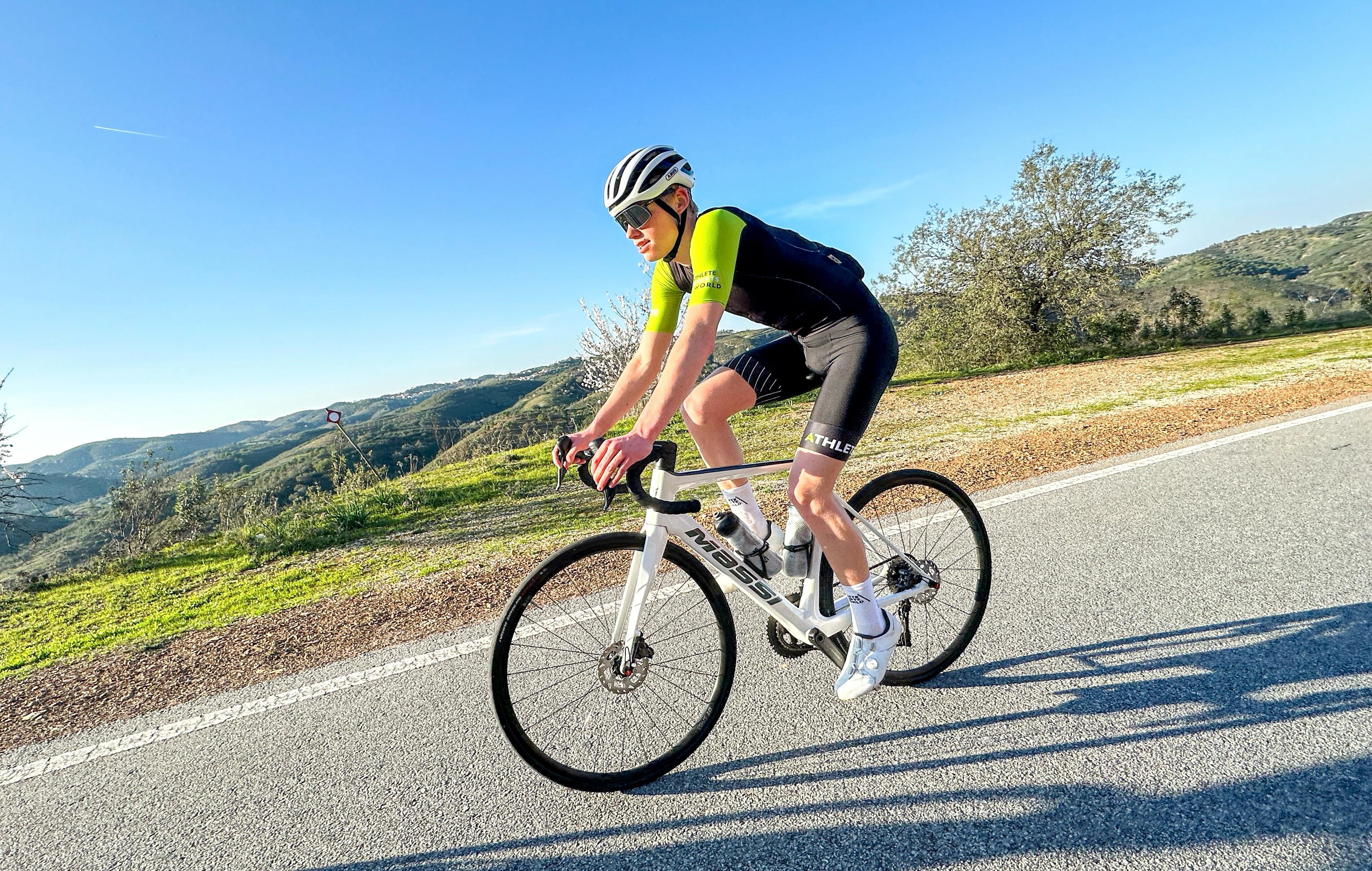Winter is coming! It is getting colder and the days are getting darker, so summer bike rides are not in it for the time being. That of course takes some getting used to, but for some it is still tempting to get on the bike with the same summer cycling clothing. Unfortunately it is really too cold for that now. We have to lay down!
Laying is more than just a fashion statement: it helps you to stay warm and dry during your ride. So comfortable. So take the time to choose the right layers for your next winter bicycle adventure!
BASE LAYER
Underwear is ideal for cycling in the winter. Why? Because it makes your ride considerably more comfortable by regulating your body temperature in cold outdoor weather.
We call the first layer the base layer. A base layer is a tight layer of clothing that is worn directly on the skin and helps regulate body temperature by absorbing and releasing moisture. That is basically the main task of the base layer. The best materials for this are polyester, polyamide and polypropylene.
By the way, leave your t-shirt from cotton at home when you go cycling. The material may feel fine, but it absorbs all sweat and holds it too! This way your skin and t-shirt stay wet during the ride.
Two popular basic layers are the Gobik Merino and Gobik Baselayer without sleeves.
Middle layer
The second layer is a light middle layer. This is often a jersey with long sleeves. The middle layer ensures that you stay warm, dry and comfortable during your ride. The main task of this layer is to work together with the base layer and to remove sweat together and keep the body warm.
If it gets too hot because of the effort, it is still important to have this layer on in the cold. You can choose to take a jersey with a complete zipper. This way you always have the option to ventilate!
The Gobik Cobble and Gobik Super Cobble are two ideal mid -layers. These thermal jackets keep you warm during a trip at cool temperatures and fit perfectly in the third outer layer against the rain or wind.
Outer layer
This is the layer that protects us against external elements such as rain and wind.
A windproof and water -resistant jacket is essential here. Windproof jackets can be used as extra layer on cold days to keep you dry and warm, but in the summer or spring it can also serve as a base layer for some extra heat.
On milder days, wind density ensures an excellent intermediate layer - it helps to hold the heat close to the body, so that you stay warm without having to wear thick clothing.
Plus, when the weather gets a little warmer, a windproof jacket is the perfect outer layer!
There is no jacket that provides maximum protection for all weather conditions, but a light water resistant jacket like the Gobik Pluvia Is always a winner!
LEGS
Don't forget your legs! In the cold it is important to protect your knees and thighs. They constantly catch the cold wind frontally.
Bib shorts are the best option for cycling in the winter. They keep your legs drier and warmer, so you can drive comfortably in wet, cold weather.
Because bib shorts have a higher waistband than normal cycling pants, sanding or skin irritation is prevented at low temperatures. As a result, these cycling pants make your ride a lot more comfortable.
In addition, Bib shorts often have grippers on the ankles to prevent them from crawling up and reflective details for extra visibility in the evening.
Perfect for the dark days!
There is also the option to wear knee or leg warmers, such as the Gobik Haru Pitch Thermal Kniewarmers or leg warmers.
Hand and overshoes
During the entire cold days it is important to keep your hands and feet warm. You can use bicycle gloves and overshoes for this.
Gloves Not only keep you warm, but also give you more grip on your steering wheel.
Your overshoes must be waterproof and insulated (with really good insulation). These protect your feet against rain and snow and at the same time keep them comfortable. Take the Gobik overshoes.
TEST!
Every body is different. Some people experience cold rather than others. By testing you can find out for yourself what works best for you and your body type.
It is possible that some of these tips work better than others, even depending on the weather conditions, but they are all effective ways to stay warm when it gets really cold outside.
In any case, one thing is certain: we just continue cycling!







